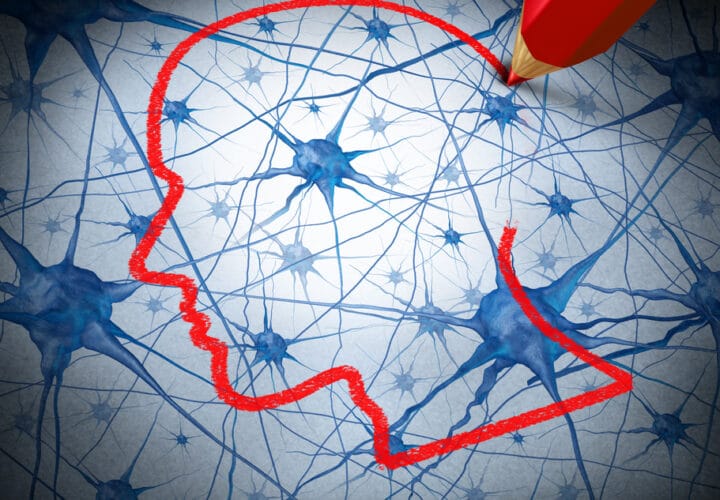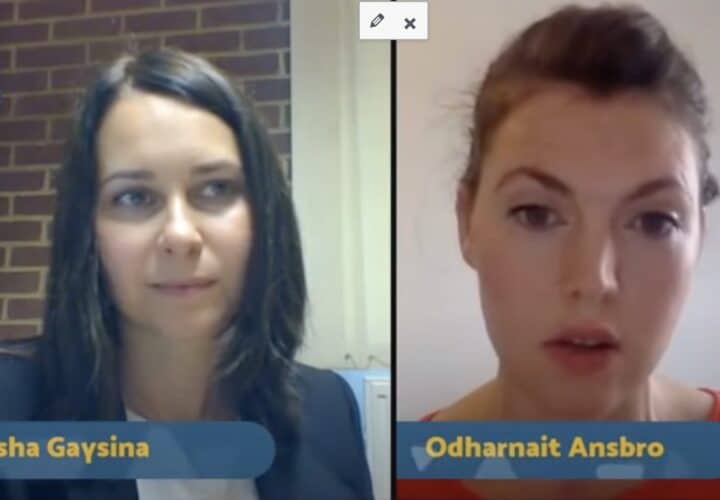UCSF neuropsychologist Kaitlin Casaletto on genetic predisposition for FTD and the results of her recent research.
While researchers are looking into new forms of medicinal solutions to dementia, more and more attention is being paid to lifestyle-focused approaches to the disease. Kaitlin Casaletto, a neuropsychologist and assistant professor at the University of California San Francisco (UCSF) Memory and Aging Center, recently published an observational study of participants with a genetic predisposition for developing frontotemporal dementia, examining how more active lifestyles correlate with a slower progression of the disease.
- About 30 percent of individuals with FTD possess one of three genetic mutations, giving them an almost guaranteed chance of developing the disease
- More active individuals performed almost two times better than their less active counterparts on cognitive tests
Being Patient spoke with Casaletto about genetic predisposition for FTD, the results of the study and her plans for expanding on the research.
A Genetic Predisposition for Developing Frontotemporal Dementia
Being Patient: So let’s just start first with the genetic predisposition for people with FTD. How many of these cases are associated with a genetic link?
Kaitlin Casaletto: So in FTD, which is one of the most common forms of early onset dementia, about 30 percent of cases are linked with this autosomal dominant genetic form, which essentially means that if you have the gene, we know that you will get the disease. So this is a really penetrant form of dementia.
A More Active Lifestyle Leads to Slower Progression
Being Patient: When you talk about dementia there’s so much doom and gloom out there. What your study found is that in fact, we may not have control over whether or not we’re going to get dementia, but we do have control over how the dementia progresses. Tell us about what specifically you found with your study.
Kaitlin Casaletto: So what we did with our study was follow people who had these three genes for FTD, so again this means that if they have this genetic mutations they will have dementia, and so the question really was, well, can lifestyle behaviors do anything in these people who we think might be predestined to develop dementia.
We measured, and they told us, their baseline: How active are they in their physical everyday life and in their cognitive everyday lives? Are they jogging, are they doing strenuous yard work, are they walking? Also, are they engaging their brains cognitively? Are they reading, writing, spending time with loved ones, doing hobbies?
And we found that in these gene carriers, those that had more physical and cognitive activities at their baseline demonstrated slower clinical progression of the disease year over year. It was about a 50 percent slower clinical progression per year in those with the higher levels of activity. So again, really exciting to see this sort of proof of principle in people with a dominant biological risk for dementia that perhaps these behaviors could be impacting their trajectories.
Being Patient: So how exactly did you measure what they were doing? What types of mandates did you set out, and what were you looking at?
Kaitlin Casaletto: This was actually just an observational study, so we didn’t actually ask them to engage in any particular types of lifestyle behaviors, we simply asked them, you know, in your day-to-day life, how often are you engaging in jogging? How often do you climb stairs? And then separately we also asked how are you cognitively engaging in your world, with your hobbies and peers?
So this wasn’t even necessarily asking them to do anything, but it did show a correlation that those who have more active lifestyles showed a slower progression of the disease. And just as you mentioned this is the first time that we’re seeing the positive effects of an active lifestyle are translating into a different form of dementia, because this was the first study into FTD to show that lifestyle has an effect, and again among the first among this genetic form to show that perhaps lifestyle could be really be shaping your brain health despite this high risk.
Limitations of the Study and Looking to the Future
Being Patient: So we know that the distinction between FTD and Alzheimer’s is where it attacks the brain. FTD really attacks the frontal cortex, which is responsible for reasoning, decision-making, things like that. So what does it look like for FTD to evolve in the brain, and how did you measure the slowing of progression?
Kaitlin Casaletto: So what we did was ask the participants’ family members how well they were functioning in their everyday life. Are they able to drive, take care of their medication management, their appointment management, sort of these everyday activities that we engage in.
We also asked the participants themselves to self-report, and when they came into the lab they completed measures of memory and other thinking abilities. These were mostly paper and pencil tests that measured thinking skills. Those were the outcomes that we were really the most interested in.
And so we found that those that had more activity had better caregiver-rated functioning over time, and then we also found that in participants that had some atrophy in their frontal lobe, as you were describing, those that were more active actually had about two times better performance on our paper and pencil testing than their less active peers.
Being Patient: So where do you go from here, Kaitlin? This is obviously providing great insight into how lifestyle can impact the progression of this disease. Where do you go from here?
Kaitlin Casaletto: Yeah, well you know first I have to say a big cautionary note in that these data are correlational, so this is an observational study, which essentially means that we correlated active lifestyles with better outcomes, but it’s certainly possible that the reverse relationship exists. So I think that to prove that lifestyle does affect the brain, the gold standard would be to do a clinical trial and to manipulate a lifestyle behavior and see its effect on the brain. So we would love to see about developing something like that in the near future.
But for now our immediate next step, which we actually just launched this week, is we’re going to be capturing activity levels in a more objective way. We’re going to be strapping actigraph units onto our participants, just using something like a Fitbit, so that we can more objectively tell, well how many steps does it take to get to better brain health? And you know, really take out the biased piece that I think is sort of inherent with self-report as well. So a lot more work to do, but again this is a really good hint that we’re digging in the right direction.









